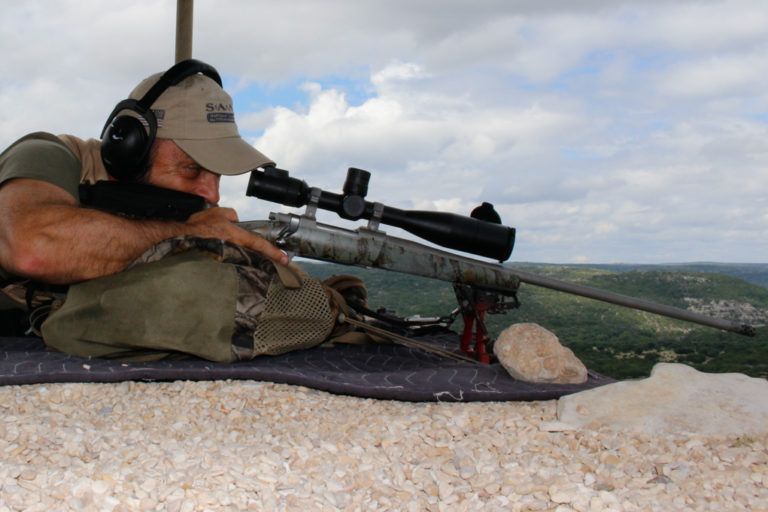
Shooting downhill or on an incline requires an adjustment in trajectory. Here’s what you need to know to connect on those tricky angled shots.
What do you need to know to adjust trajectory on angled shots?
- The longer the range to target, the more critical incline and decline become.
- Today’s shooters have many ballistic apps and BDC calculators for angled shooting.
- Know field calculations you can use on the fly when faced with high- or low-angle shots.
- Develop a system with your BDC reticle for angled shooting and practice, a lot!
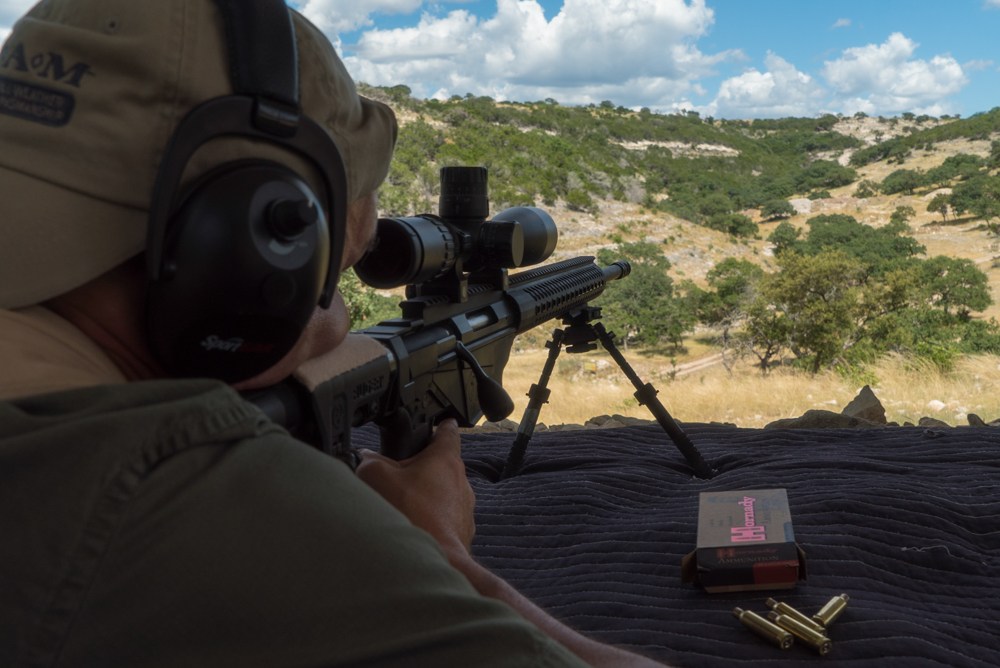
Shooting Downhill, Shooting Uphill
If you raise or lower the target, the amount of drop necessary will appear to change.
Let’s say I’m using my .300 Winchester to shoot at a target 400 yards away, but at a downhill angle of 20 degrees. The above information will indicate that I need to hold 19.1 inches above the bullseye, in order to allow for the drop in trajectory over that distance.
However, I’d hit the target about 4 inches higher than I aimed. Now, perhaps that would still be a lung hit, or maybe it would not be a vital hit at all. Why?
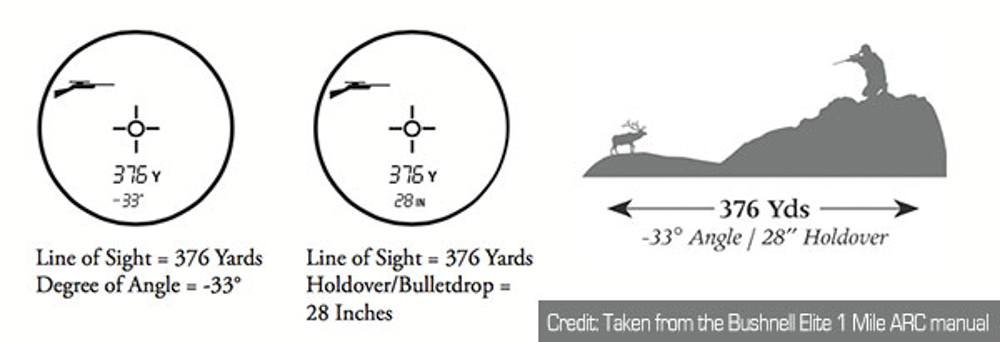
When measuring the effect of gravity on a bullet’s trajectory, it needs to be done on a level line, perpendicular to the line of gravity. When shooting uphill or down, you need to know the level distance.
It’s not hard to calculate this difference; simply observe the angle of deviation from level (in our instance, 20 degrees), and take the cosine of that angle. Multiply those results by the slope distance (like you’d observe on some laser range finders) and you’ll have the level distance.
In the case above, where my .300 Winchester was 19.1 inches low at 400 yards, I should’ve held for 375 yards — the level distance — where the bullet will strike 15.5 inches low. Here’s the math:
Cos (20 deg.) = 0.939 0.939 x 400 yards = 375.8 yards.
As the shooter, you need to know both the distance (again the range finder is your friend), and angle, either up or down to adjust the trajectory.
Laser Rangefinders And Ballistic Apps
There are a couple of methods I recommend. Many of today’s smartphones provide an app that will act as a level, providing a measurement of the angle up or down from level; I use one that acts as a clinometer (I’m a mild-mannered land surveyor by day) and is rather accurate.
If I have a severe uphill or downhill shot, especially at the distances where the reduction in range becomes significant, I should have time to use my phone to observe the angle and make the necessary adjustment to the trajectory.
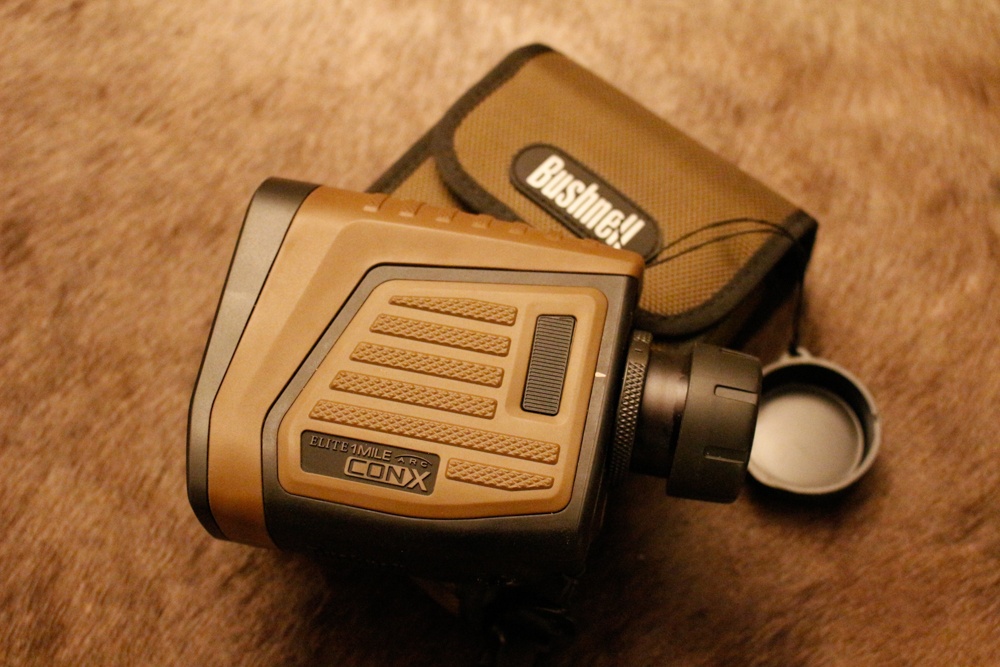
Many of today’s laser rangefinders, such as the Bushnell Elite 1 Mile, also provide either a level distance to the target, doing the mathematics for you, or will provide the angle from the shooter to the target.
If you don’t like the electronic gizmos, you can spend some time in the field judging some severe slopes where the level distance to the target will be affected most, and develop a good idea of what a 10-degree slope looks like in comparison to a 20- or even 30-degree slope.
When things get to 30 degrees and more, you’ll usually find climbing requires a hands and knees position. It’s very common for most folks to judge a slope as more severe than it truly is, so some practice will come in handy for reducing those distances to level.
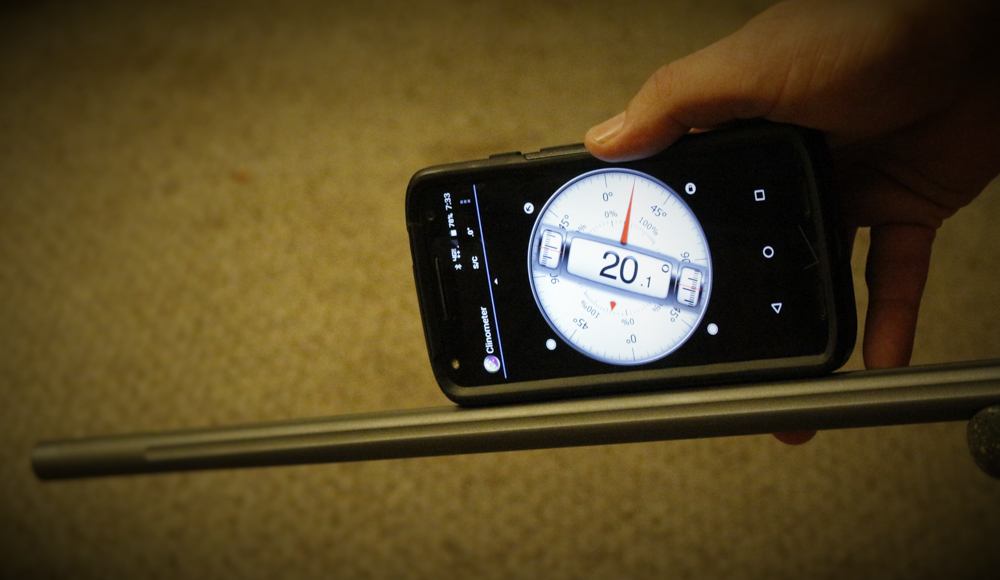
While few of us carry a cosine chart around in our heads, here’s a good reference piece to give you the amount of reduction necessary, in percentages.
5-10 degree slope = 98% of slope distance
15-20 degree slope = 95% of slope distance
25-30 degree slope = 90% of slope distance
35-40 degree slope = 80% of slope distance
45 degree slope = 70% of slope distance
For the rifle, where we have the benefit of using sleek, sharp bullets that resist gravity’s effects efficiently, the gravitational drop in the trajectory is a manageable figure, especially within common hunting distances.
For the handgun hunter, where velocities are significantly lower — coupled with using projectiles that traditionally have a much lower BC — knowing the distances even within 150 yards becomes paramount.
For personal defense guns, the distances at which you are likely to shoot are close enough to negate the major effects of gravitational pull. That said, I like to take my carry guns out to distances where I see a definite drop in the trajectory of my group, so I know what’s going on. The same principals we discussed for rifle bullets apply to handgun bullets, except the scale shrinks a bit.
Long-Range Shooting
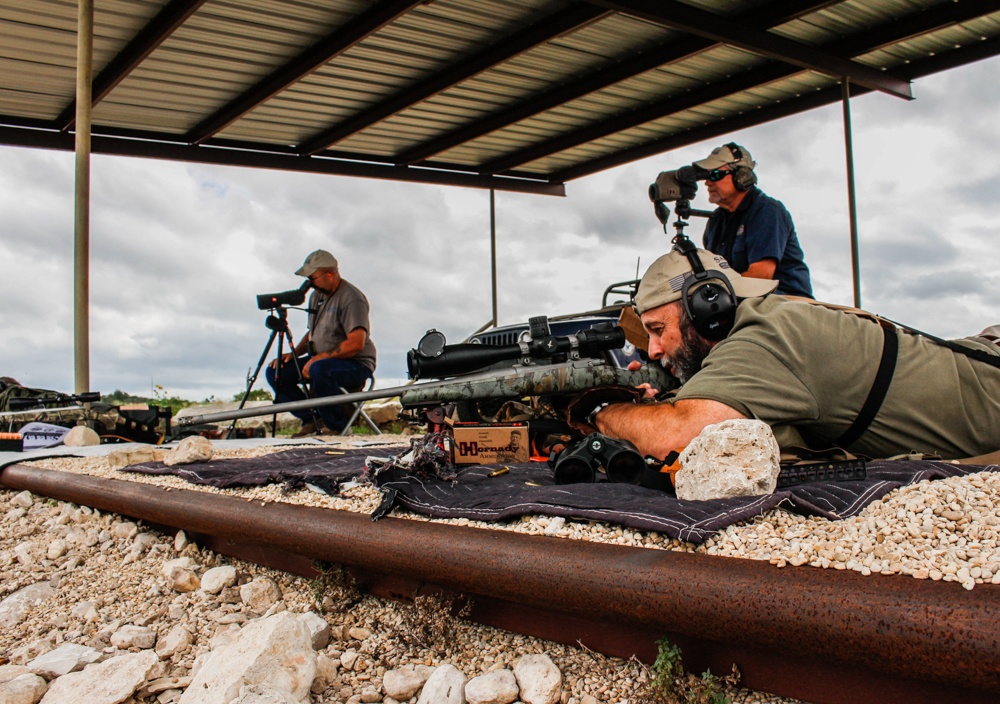
As a side note, while all of this mathematical wizardry probably won’t make much of a difference to the hunter whose shots are taken within 200 yards (which I feel represents a great deal of the shots taken at game annually), there is a movement in the hunting world to take shots at game at distances that seem to increase with every television season.
While I realize that shots out past 500 yards can certainly be executed by a shooter who is highly experienced and knows his or her gear inside and out, the portrayal of routine shots taken out past 700 yards, at unwounded game, is not only unethical, but will result in a multitude of wounded game.
As I demonstrated with the drop figures alone — saying nothing of the effects of wind deflection — a misjudgment in distance of as little as 25 yards can result in a wounded and/or lost animal.
I highly suggest you find your own personal limits with respect to distance, based upon your own shooting abilities, and stay true to that figure. It’s one of the instances where you’ll have to police yourself. Should you realize that the distance is too great to make a confident hit, simply say no to the shot and get closer.
Purchasing the best long-range optics, and a cartridge/rifle combination that is theoretically capable of connecting, does not make it a wise decision to take the shot. I don’t want to sound like I’m preaching, but I’m not comfortable with the way some outdoor personalities act blasé about shots past 500 yards at game; there’s an awful lot that can go wrong.
So, with an accurate drop chart available, how can you make those shots that require a certain amount of holdover? Gravity is relentless, and you need to fight that effect, even at 250 or 300 yards.
Ballistic Drop Compensated (BDC) Reticles
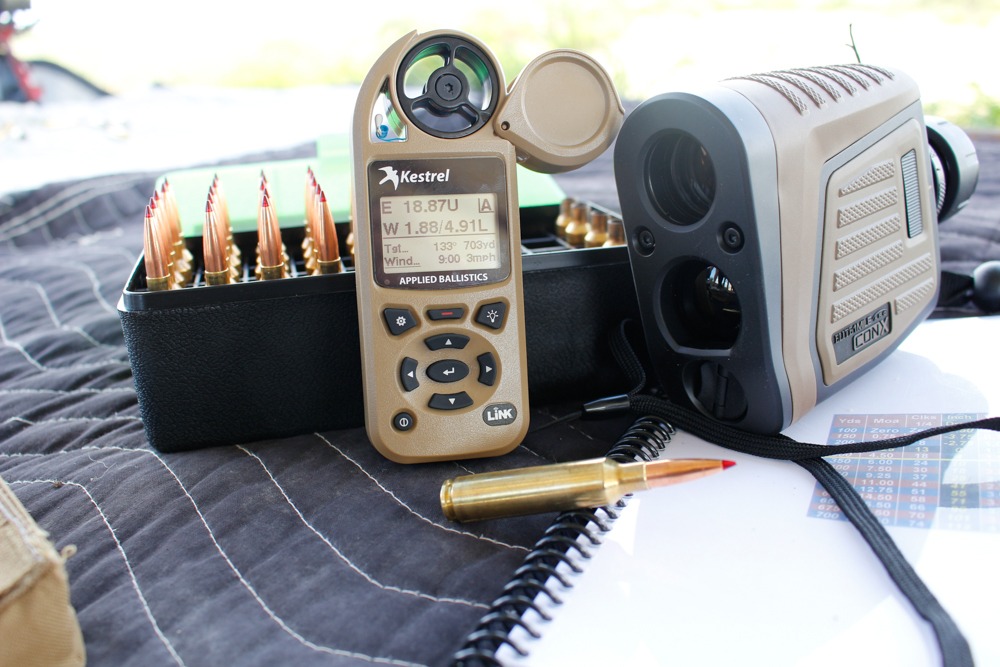
In this great technological age you’d be foolish not to take advantage of electronic calculators. However, a ballistic drop compensated (BDC) reticle in a riflescope is another means.
This is a reticle with more than just crosshairs, but a series of smaller horizontal lines on the lower vertical wire at a predetermined interval, providing a specific aiming point out at certain distances.
For example, my 6.5-284 Norma wears a Swarovski Z5 3.5-18x44mm riflescope, with the BRH reticle. This optic features a duplex reticle on three of the four wires (up, left and right) and a ballistic compensated reticle on the lower vertical wire.
In addition to the crosshair point, which I use for a 200-yard zero, there are five additional, smaller crosswires, and four small dots on that lower wire, as well as a point where the thin wire thickens.
In that rifle with 140-grain handloads, it works like this: my traditional crosshair is set to hit at 200 yards (and at any range shorter than that I’ll confidently hit an animal’s vitals), using the next lower crosswire it will hit at 270 yards, and the dot below that will impact at 330 yards. Should an even 300-yard shot present itself, I simply hold between the first crosswire and first dot.
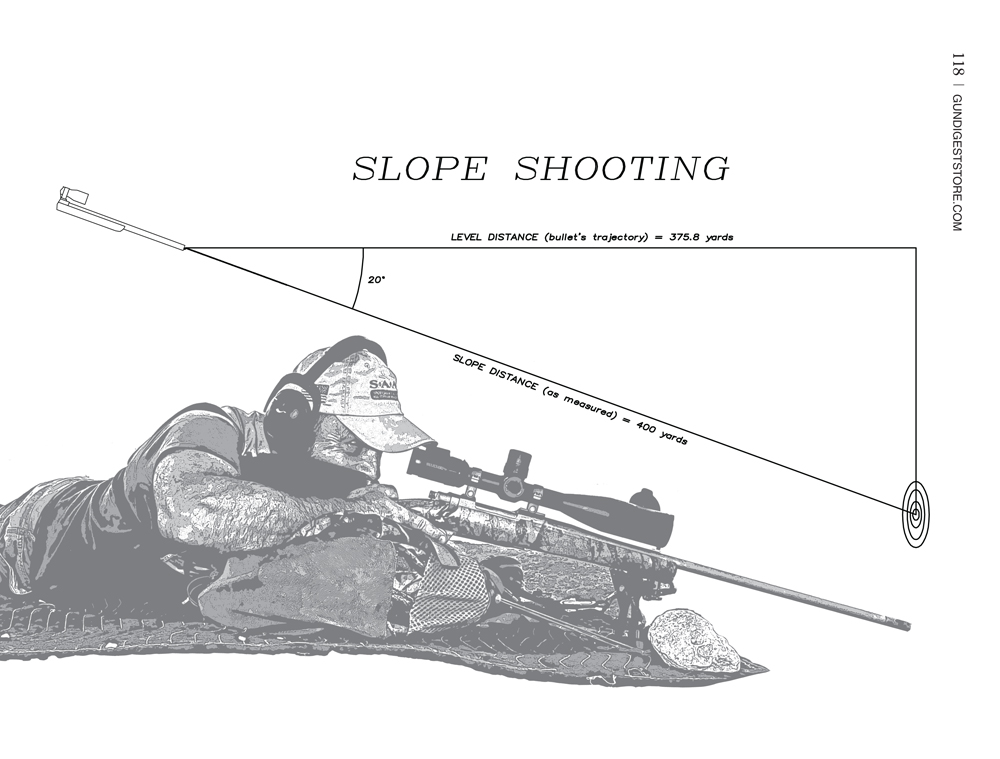
Holding at the next crosswire down causes the rifle to hit at 390 yards (I use this for 400, calling it close enough) while the next dot lower is for 450 yards.
Continuing down the line, the next line is an even 500 yards, and the dot below that will strike at 550 yards. The fourth wire down strikes at 590 yards (so close to 600 it’ll scare you) and the dot below impacts at 640 yards. The lowest crosswire is designed to hit at 680 yards, but we’re already considerably past my hunting ranges.
I much prefer to stay within 400 yards, but certain hunts may require a longer shot. However, it sure is fun to play with steel plates and paper targets at those distances.
Now, I’ve found this reticle works within reason at these distances, and Swarovski has put a considerable amount of research into it.
And while this is only one of their available options, I think it makes a good choice for a hunter whose ranges concur with my own, or don’t plan to take shots much past 600 yards (where things can get tricky due to the winds, but that’s for later).
This article is an excerpt from the Big Book of Ballistics.

Next Step: Get your FREE Printable Target Pack
Enhance your shooting precision with our 62 MOA Targets, perfect for rifles and handguns. Crafted in collaboration with Storm Tactical for accuracy and versatility.
Subscribe to the Gun Digest email newsletter and get your downloadable target pack sent straight to your inbox. Stay updated with the latest firearms info in the industry.

![Best Concealed Carry Guns In 2025 [Field Tested] Wilson Combat EDC X9S 1](https://gundigest.com/wp-content/uploads/Wilson-Combat-EDC-X9S-1-324x160.jpg)


![Best 9mm Carbine: Affordable PCCs [Tested] Ruger Carbine Shooting](https://gundigest.com/wp-content/uploads/Ruger-Carbine-Shooting-100x70.jpg)
![Best AR-15: Top Options Available Today [Field Tested] Harrington and Richardson PSA XM177E2 feature](https://gundigest.com/wp-content/uploads/Harrington-and-Richardson-PSA-XM177E2-feature-100x70.jpg)
